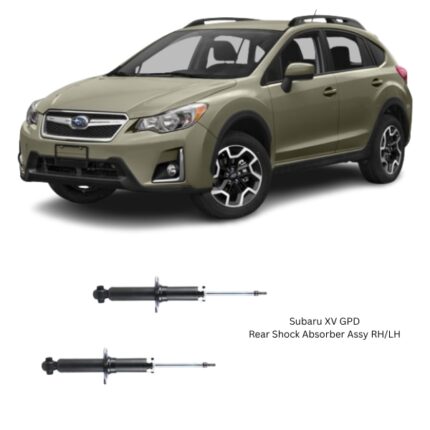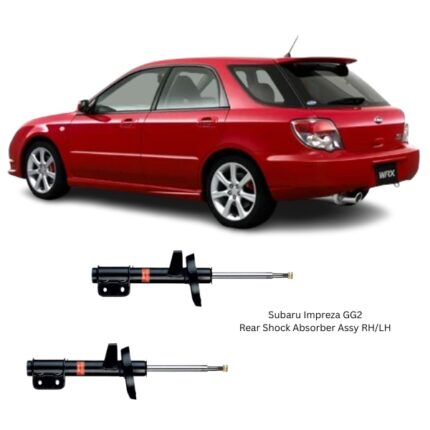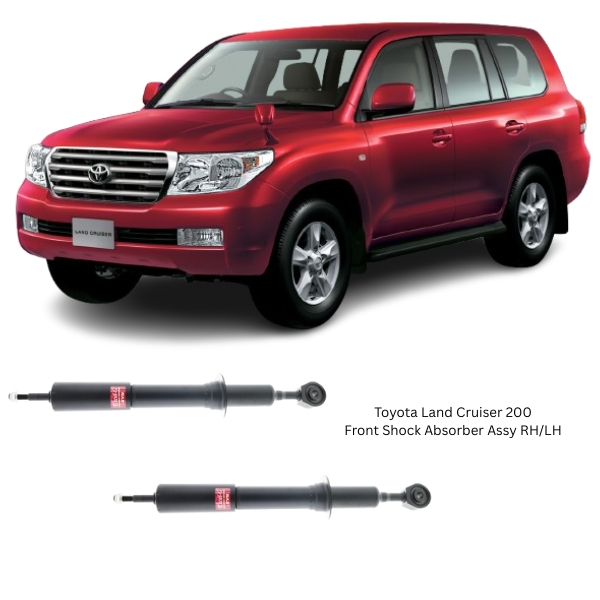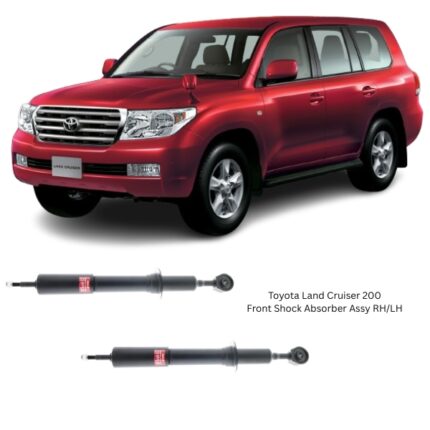Get Toyota Land Cruiser 200 Series Front Shock Absorber Assy RH/LH 340062 in Kenya
The Front Shock Absorber Assembly (Right Hand and Left Hand) is one of the most critical suspension components in any vehicle. Located at the front axle, it ensures that the wheels maintain constant contact with the road by absorbing and dampening shocks, vibrations, and oscillations generated during driving. This not only improves comfort for passengers but also enhances handling, braking performance, and overall road safety.
Without effective front shock absorbers, the vehicle would bounce excessively after hitting bumps or potholes, steering response would be compromised, and braking distances would increase. As the main connection between the vehicle’s body and its suspension springs, front shock absorbers directly influence both ride comfort and driver confidence.
Function of the Front Shock Absorber
The front shock absorber is a hydraulic damping device that works by controlling the up-and-down motion of the suspension. Inside the shock absorber is a piston that moves through hydraulic fluid when the suspension compresses or extends. The resistance created by the fluid flow through precision valves slows the movement, preventing excessive bouncing or uncontrolled suspension motion.
Many modern shock absorbers are gas-charged, meaning nitrogen gas is added to reduce aeration of the hydraulic fluid. This ensures consistent damping, better stability, and improved performance under continuous use.
Since the front axle bears most of the vehicle’s weight and is responsible for steering, the front shock absorbers have a greater impact on ride quality, handling, and safety compared to the rear. The RH (Right Hand) and LH (Left Hand) designations ensure each shock absorber is engineered to fit its exact side of the vehicle for proper alignment and function.
Key Features
-
Hydraulic Damping System – Controls suspension rebound and compression to provide a smooth ride.
-
Gas-Charged Technology – Prevents fluid aeration, ensuring consistent performance and reducing shock fade.
-
Heavy-Duty Construction – Built from high-strength steel with corrosion-resistant finishes for durability.
-
Precision Fitment – Each assembly is designed specifically for RH or LH installation, maintaining suspension geometry.
-
Integrated Mounts and Bushings – Reduce vibration transfer to the vehicle body and improve installation convenience.
Benefits
-
Improved Ride Comfort – Absorbs road irregularities, providing a smoother journey for driver and passengers.
-
Enhanced Vehicle Stability – Reduces nose-diving when braking, front-end lift during acceleration, and body roll in corners.
-
Better Handling – Maintains tire-to-road contact for sharper steering response and control.
-
Increased Safety – Ensures consistent braking performance by keeping the wheels stable on the road surface.
-
Extended Tire Life – Prevents uneven wear caused by poor suspension control.
-
Suspension Longevity – Protects springs, mounts, and other components from premature wear.
Signs of Worn Front Shock Absorbers
Shock absorbers wear gradually, and their decline may not be immediately noticeable. Common warning signs include:
-
Nose-diving during braking
-
Excessive bouncing after hitting bumps
-
Vibration or steering wheel shake at higher speeds
-
Leaking hydraulic fluid from the shock absorber body
-
Uneven tire wear, often with cupping patterns
-
Knocking or clunking noises from the front suspension
-
Reduced stability when cornering or driving over uneven roads
Driving with worn front shock absorbers compromises safety and should be addressed immediately.
Installation Guidelines
Front shock absorbers should always be replaced in pairs – both RH and LH – to maintain suspension balance and predictable handling. Installing one new shock while leaving the other old can cause uneven damping, steering pull, or further suspension wear.
The installation process generally involves:
-
Safely lifting the vehicle and removing the front wheels.
-
Detaching the old shock absorber from the suspension and mounts.
-
Installing the new RH or LH assembly with the correct torque specifications.
-
Reassembling and test-driving the vehicle to confirm performance.
Because the front suspension plays a crucial role in steering and braking, professional installation is highly recommended. After replacement, a wheel alignment check ensures correct geometry and prevents premature tire wear.
Maintenance
While front shock absorbers are maintenance-free, they should be inspected regularly during servicing. Technicians should look for:
-
Leaks around the piston seals
-
Worn or cracked mounting bushings
-
Visible damage or corrosion on the housing
-
Abnormal noises during operation
Most shock absorbers have a service life of 60,000 – 100,000 km, though this varies depending on driving conditions. Vehicles driven on rough roads, carrying heavy loads, or subjected to aggressive driving may require earlier replacement.
Why Timely Replacement Matters
Failing to replace worn front shock absorbers can lead to several issues:
-
Increased Braking Distance: Reduced road contact means longer stopping times.
-
Loss of Steering Control: The vehicle may feel unstable, especially during cornering or emergency maneuvers.
-
Accelerated Tire Wear: Uneven damping causes irregular tire wear patterns.
-
Passenger Discomfort: Vibrations and jolts are more noticeable in the cabin.
-
Damage to Suspension: Additional strain on springs, bushings, and mounts accelerates wear.
Replacing both front shock absorbers at the appropriate time restores original performance, ensuring safety and driving comfort.
Follow us on Facebook for more parts.





Reviews
Clear filtersThere are no reviews yet.